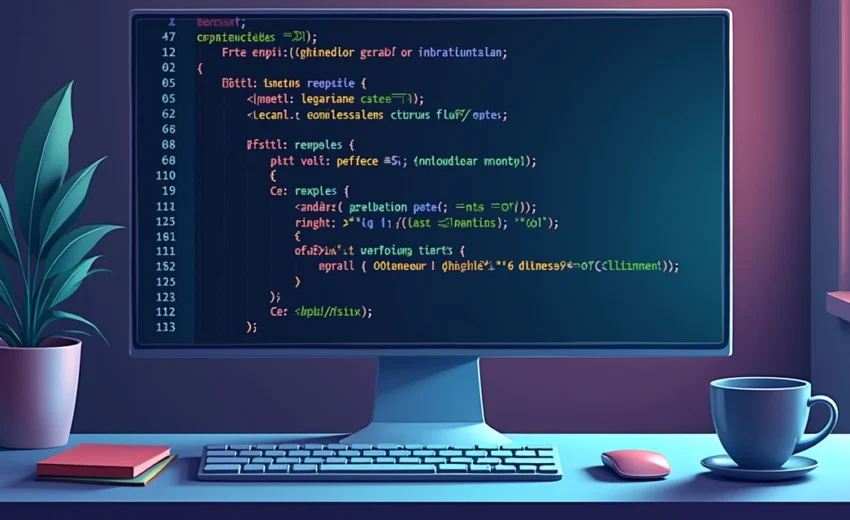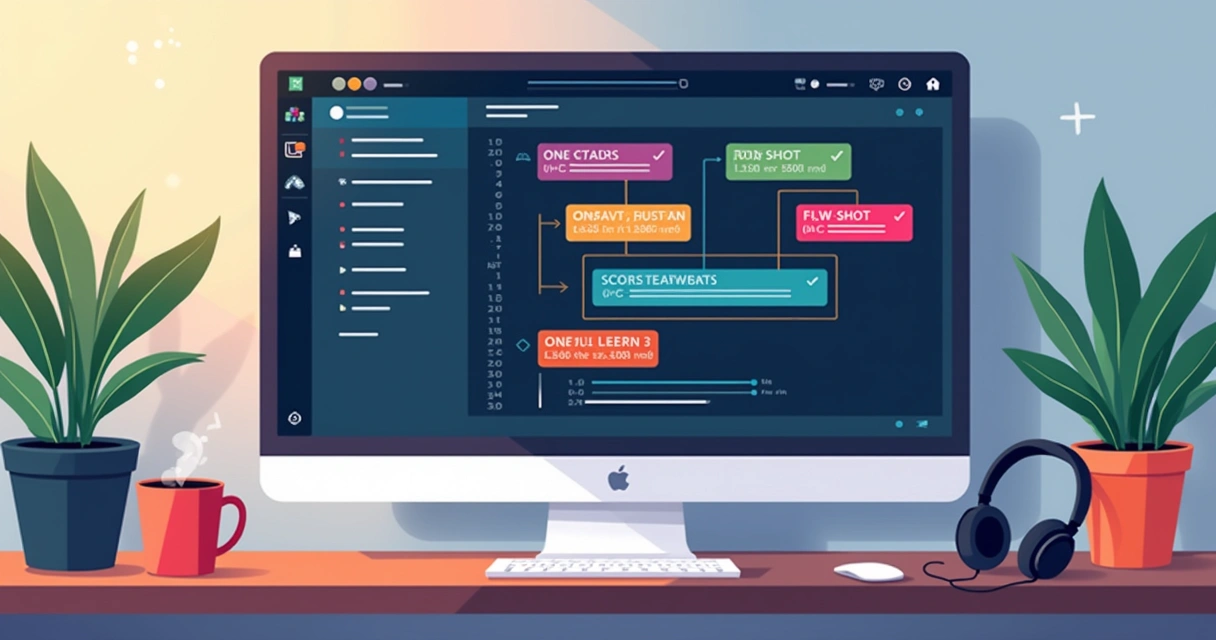
Sometimes, you just need one perfect shot. Other times, a few smart pointers do the trick. In recent years, there’s been a buzz around the way we teach machines, not just to recognize things, but to do it with minimal guidance. Especially in Java ecosystems, where clarity and structure define the backbone of enterprise solutions, incorporating these lightweight strategies is becoming something of a silent revolution.
This article guides you through the core ideas behind learning from one or very few examples, touching on practical implementation in Java and Spring AI, personal anecdotes, and concrete application stories. Along the way, you’ll see the concepts come alive—with code, context, and the occasional surprise.
Grasping the basics: what is one-shot and few-shot?
If you’re reading Blog Rodrigo, chances are, you’ve tuned into the latest advances in tech. When people first encounter expressions like “one-shot learning,” it might sound like jargon. But the idea is surprisingly simple.
Imagine learning someone’s face after seeing it just once.
Traditional machine learning needs thousands, sometimes millions, of labeled examples. But what if—like humans—a computer could learn from a single case, or just a handful?
That’s what these “-shot” learning methods are about. You show the model one (or a few) examples, and it recognizes a new item based on those. As explained by GeeksforGeeks, “one-shot learning” empowers a model to generalize and categorize after seeing just one instance.
Few-shot learning, as you might guess, allows a few more examples. It turns out—this isn’t just a technical feat. It’s shaping the landscape for situations where data is hard to acquire, time is short, or costs run high.
Where you see it in real life
- Facial recognition with limited photo data
- Medical imaging and rare disease detection
- Language understanding with minimal annotation
- Personalization features when starting from scratch
A report by Analytics Vidhya shows how few-shot learning is increasingly used to spot rare illnesses from medical scans—a powerful shift since few of these cases exist for training.
Why it matters in Java and Spring AI
Java developers aren’t strangers to working with large amounts of data and complex business logic. But with the rapid rise in artificial intelligence frameworks—and the pressure to deliver smart services even when datasets are limited—these learning techniques are coming to the forefront.
Think about it: Waiting for labeled data to trickle in can be a bottleneck. Integrating one-shot and few-shot models, especially with frameworks like Spring AI, lets teams deploy more adaptable, nimble applications. The healthcare industry, for example, saw a 30% rise in early rare disease diagnosis through few-shot strategies. And that’s just one sector.
 Curious where you might use them in Java? That’s next.
Curious where you might use them in Java? That’s next.
Java and one-shot: meeting ai with minimal examples
I remember the first time I needed to push an application with almost no data support. The pressure was on, and the dataset barely covered all expected user scenarios. It was frustrating. Then, these newer learning approaches caught my attention. I didn’t solve everything overnight, but something clicked.
With the right choices, you can coax even the most conservative Java stacks to play nicely with these techniques. Frameworks like Spring AI make blending machine learning and enterprise Java surprisingly approachable.
Core steps for integrating in java
- Preprocess and shape your data into example tasks
- Select a framework like Spring AI, HuggingFace Transformers, or ONNX
- Embed the examples and configure your model for single or few-shot interaction
- Test, tune, and watch for generalization issues—it’s not always predictable!
Take a look at a typical usage flow. Below, you’ll find a practical scenario using Spring AI in a basic customer support bot. The idea? Let it classify intent after being shown just one example per intent.
Spring AI practical sample: intent classifier with single sample per class
Suppose you’re developing a chatbot for a support system. It needs to recognize different types of customer requests (for example, “reset password,” “track order,” and so on). But—you’ve only got one labeled sample per request.
Here’s a snippet that captures the feel of it:
Sample pseudo-data:
- “I forgot my password” → ResetPasswordIntent
- “Where is my package?” → TrackOrderIntent
- “I need to update my email address” → UpdateEmailIntent
Sample Java/Spring AI classification logic:
This example is conceptual—real projects might need adaptation for scaling and model selection.
@Servicepublic class IntentClassifier {
private Map<String, String> intentExamples = Map.of(
"ResetPasswordIntent", "I forgot my password",
"TrackOrderIntent", "Where is my package?",
"UpdateEmailIntent", "I need to update my email address"
);
public String classify(String input) {
// Simple similarity check - for demonstration
return intentExamples.entrySet().stream()
.min(Comparator.comparingInt(
e -> levenshteinDistance(input.toLowerCase(), e.getValue().toLowerCase())))
.map(Map.Entry::getKey)
.orElse("UnknownIntent");
}
// Basic Levenshtein distance implementation (for similarity)
private int levenshteinDistance(String a, String b) {
// ... algorithm details ...
}
}
This is one way to kick off one-shot strategies. Of course, more sophisticated setups (using embeddings or language models from Spring AI) quickly boost accuracy, but you get the core concept here—learning from minimal cues.
The power of examples: how context shapes results
One thing became clear as I started to experiment: it’s not just about the number of examples. The quality, structure, and clarity of those examples are what really move the needle.
A smart example can do more than a dozen vague ones.
- Examples that directly mirror real-world syntax work best
- Ambiguous or overly simplistic examples create confusion
- Small tweaks to phrasing often dramatically change outcomes
In some cases, the “single example” approach was just too brittle. That’s where few-shot comes in, balancing between data hunger and smart guessing.
A quick story: pivoting to few-shot in a real system
A couple of years back, I worked on a document retrieval system for a legal tech startup. Our first go—with just a single sample for each document type—missed subtle differences between contract types. It once mistook a purchase agreement for an employment contract (luckily, only during a test run).
We increased the example count to three or four per class, capturing more varied sentence structures. Suddenly, accuracy ticked upward, and odd classifications dropped off. This fits with what Coursera explains: minimal but diverse samples empower models for tasks like sentiment analysis and text classification, even when labeled data is rare.
 Switching to few-shot in spring ai: expanding context
Switching to few-shot in spring ai: expanding context
If you’re following Spring AI integration with Java updates on Blog Rodrigo, you’ll notice that these models can go from one example to a handful by just fine-tuning the configuration.
How to pass custom few-shot prompts in Spring AI:
@Getter
@Setter
@Component
public class FewShotPromptGenerator {
private List<Example> fewShotExamples = List.of(
new Example("reset password", "I can't remember my login credentials."),
new Example("reset password", "Forgotten my password again."),
new Example("track order", "Package isn’t here yet—status?"),
new Example("update email", "My email address has changed. Please update.")
);
public List<Example> getSamplesForIntent(String intent) {
return fewShotExamples.stream()
.filter(e -> e.getIntent().equalsIgnoreCase(intent))
.collect(Collectors.toList());
}
}
A little extra variety goes a long way. You’re not just covering more ground; you’re making your model more resilient to messy real-life input.
When you should prefer one method over another
There’s no clear-cut rule, honestly. If your data is severely limited—if you’re launching a product for a new market or your users need personalization instantly—one-shot might be the only realistic way forward.
- If every class shares almost the same language, risk of confusion is high. Add more examples.
- When classes are well-separated and distinct, sometimes just one is enough.
- For tasks that are highly contextual—like detecting irony or nuanced sentiment—few-shot setups make a big difference.
- TechTarget emphasizes few-shot’s usefulness for vision tasks with sparse data.
The real world usually pushes you somewhere between the extremes. Build, test, scale, adjust.
Linking model intelligence to business outcomes
Choosing smarter examples doesn’t just boost accuracy—it can impact revenue, customer loyalty, and even regulatory compliance. The healthcare example mentioned earlier is proof. Implementing a few shooters in diagnostics led to earlier detection and better treatment paths—see this case study by Xcubelabs.
Sometimes, the right three examples save lives.
Other industries gain too. Retailers can enable chatbots to boost conversion with near-instant adaptation. Financial tech teams use these approaches to detect rare fraud signals. There’s no shortage of areas where nimble learning makes a dent.
Pitfalls, gotchas, and things that make you think twice
Nothing’s ever as easy as it sounds. Working with one-shot or few-shot learning comes with a few traps. Some I’ve watched other teams fall into; others, I’ve stepped into myself.
- Poor example quality. Garbage in, garbage out. Flawed samples—overly broad, riddled with typos—lead to poor predictions.
- Overfitting on tiny data. Sometimes, a model latches onto quirks that don’t generalize. Regular checks and sample shuffling help.
- Brittle for out-of-domain inputs. People phrase things in wild ways. Single-shot models crack under pressure; few-shot helps, but not always.
It’s wise to balance speed with quality—a sharp example here, a little more context there. Experiment. Be ready to roll back or tweak as odd cases appear.
 Stretching beyond text: one-shot and few-shot in other domains
Stretching beyond text: one-shot and few-shot in other domains
It’s not just about language. Computer vision teams—handling everything from manufacturing flaws to wildlife monitoring—are turning to these strategies. As explained in TechTarget’s overview on computer vision tasks, minimal example learning lets systems pick up rare objects or anomalies with tiny datasets.
Speech recognition, fraud detection, gesture tracking—everywhere that data is scarce, these clever strategies shine.
Mixing java 21 features for smarter ai designs
Integrating new Java features, such as records or virtual threads, can further streamline these solutions. For example, storing sample prompts with record patterns in Java 21 makes your code cleaner, much like in the Example class shown above.
And thanks to virtual threads, running multiple parallel model inference tasks (like scoring several “shots” at once) becomes way less painful.
 Building smarter prototypes and mvps
Building smarter prototypes and mvps
Many teams use these methods to accelerate new product launches. As explored in projects like prototyping and MVP development with Java on Blog Rodrigo, you don’t always have the luxury of massive data pools in early phases.
Starting with carefully crafted examples helps deliver value fast, test product-market fit, then scale up with larger datasets if momentum builds.
- Shape “minimum data” MVPs by picking relatable, high-impact samples
- Use user feedback to enrich example sets—have them rephrase, correct, or submit new prompts
- Rely on system logs and error handling to flag when the model is too narrow (and needs broader sampling)
Practical advice: crafting better prompts and samples
Here’s one thing I’ve learned that’s stayed true: a good example prompt saves hours of downstream debugging. When you put effort into designing prompts—whether for a single example approach or a richer few-shot context—you catch inconsistencies before users do.
A few reminders:
- Reflect genuine user phrasing—not just clean, “model-ready” versions
- Add noise: Minor spelling errors or alternative wordings help resilience
- Document assumptions, such as which context cues the model should prioritize
- Connect sample prompts to actual business outcomes—what does ‘success’ look like?
If your application supports multiple languages, test with cross-language samples. Models—especially in a one-shot regime—may trip up, even if the intent is clear.
The future: hybrid learning and smarter AI systems
Are these techniques “the answer” for everything? No. They work best as part of a broad AI toolkit. Many current systems start lean, with one or a few examples, then blend in transfer learning or fine-tuning as more data becomes available.
Healthcare, again, leads the way. As Analytics Vidhya discussed, few-shot applications in medical imaging are now being used to detect disease subtypes for which no huge image datasets exist. Elsewhere, new architectures combine few-shot learning with unsupervised models to catch outliers or flag edge cases. It’s still evolving, and sometimes the results are unexpectedly good… or frustratingly strange.
Wrapping up: what makes one-shot and few-shot click
Circling back, why do these ideas matter so much now—especially for Java and Spring AI devs?
- Modern Java is finally agile enough to support quick-turn experimental AI features
- Spring AI bridges NLP, few-shot strategies, and enterprise workflows
- One-shot and few-shot approaches let businesses pilot features without perfect data
- Example quality and diversity—not just quantity—are the secret sauce
You don’t need to be working on medical breakthroughs (though if you are, that’s amazing). Even everyday projects benefit—serving better recommendations, handling unseen inputs, or speeding up go-to-market cycles.
If you’re curious about some concrete applications or best practices, here’s a thorough discussion on using Spring AI for scalable inference.
Start small, but think big.
Whether it’s refining prompts, playing with zero, one, or a handful of examples, or scaling with new Java features—there’s always another trick to try, and more value to unlock.
Take your next step with us
If any of these ideas spark your curiosity—or if you’re eager to see how practical AI and smart Java strategies come together—we invite you to browse more on Blog Rodrigo. Discover case studies, working code, and everyday breakthroughs that make technology simpler and more powerful. Ready to transform your next project? Connect with us to learn, build, and deliver better. The first step is a conversation—don’t wait for inspiration to find you.






